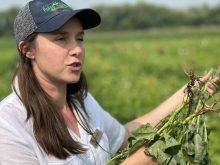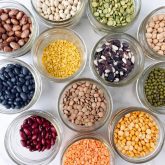Things have changed a great deal in the global pulse industry over the last 15 to 20 years.
“We’ve changed from being a direct consumer product to being a product that can be used as an ingredient in many different areas,” said Carol Brown, president of the Global Pulse Confederation board of directors. Brown spoke during the confederation’s weekly podcast on June 25, moderated by Gordon Bacon, CEO of Pulse Canada.
Alexandra Londono, global head of pulses and local grain segment for Buhler, said she has been tracking the recent trends in pulses.
Read Also

Manitoba Ag Days 2026: Local businesses gear up for Brandon farm show
Most of agriculture is seemingly at Manitoba Ag Days each January: Manitoba agribusinesses and farm groups look forward to connecting with farmers at the 2026 show.
“Consumers are much more demanding in the functionality of their food choices,” she stated, adding they are looking for healthier food choices that are more sustainable to produce. “Younger consumers are willing to pay a much higher price for foods which can claim some ethical outcome.”
Also, Londono noted that big meals are becoming something of the past, as more consumers turn to snacking on healthier foods.
Coming at pulses from a different angle was Abhishek Sinha, the co-founder and CEO of GoodDot. He said GoodDot wants to make pulse food products more affordable. He commented that up to 80 per cent of Indians are meat eaters, while at the same time India is the world’s largest consumer of pulses.
“Give Indians a product which tastes like meat, that is affordable and convenient,” he said, adding, “We are targeting the volumes rather than the margins.”
Concurring was Derrick Quandt, director of strategic sourcing for Banza, which makes rice and several types of pastas from chickpeas.
“We believe that pulses can compete from both a nutrition standpoint and a taste standpoint,” he stated.
Vishal Vijay, the head of business development for Agrocorp International, highlighted the environmental benefits to growing pulse crops. “Pulses return nitrogen into the soil. Water consumption is significantly less than a lot of other staple crops,” he said.
Sarah Wallace, CEO of The Good Barn agreed, adding that growing consumer demand has spurred innovation in the global pulse industry. From that, Wallace said her company developed healthy snack foods made from chickpeas and a wide variety of beans.
Julianne Curran, vice-president of market innovation for Pulse Canada said work is being made towards the industry developing a common language to better communicate and conducting research to support the health claims that surround pulses.
Also, she said Pulse Canada is pursuing its ‘25 by 2025’ plan which wants to find 25 per cent additional markets for Canadian pulses by 2025.
















